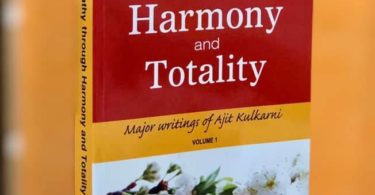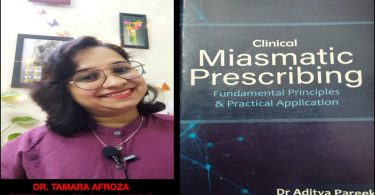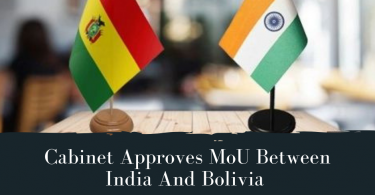
Book Name: A Brief Study Course in Homeopathy
Author: Dr. Elizabeth Wright
Reviewed by Dr. Firuzi Mehta
Published by B. Jain Publishers (P) Ltd.
ISBN: 978-81-319-0749-8
Paperback
No. of pages: 100
INR 149
I will call this a little power-house of a book. In just 100 pages, it encompasses a quick overview of the homeopathic principles that have made Homeopathy what it is – a strong system of medicine that has stood the test of time since over 200 years, every rule and every principle being as valid today as it was when it was laid down first.
Dr Elizabeth Wright is a known name in the field of homeopathy. A doctor of conventional medicine, she studied with Pierre Schmidt in Geneva and her writings, lectures and seminars gave her a strong reputation as a homeopath at an international level.
This 100 page book is divided into 18 chapters; almost like short lectures, each one covering a vital aspect of homeopathic practice. The book starts with a very basic introduction of what Homeopathy is and how it differs from modern medicine.
The chapters that follow deal with the basics, but in greater detail. How we take the case, how an acute case differs from a chronic one, how the rules of prescribing are to be applied, the important aspect of what happens AFTER the first prescription and how the evaluation of this is probably one of the most important aspects which can either lead to cure or take us down the wrong path. It is worth emphasizing at this point, that this aspect, is usually a very neglected one and it can make all the difference to one’s success as a homeopath. Student especially should make note of this and get started the right way, instead of having to unlearn this point at some time during the practice years. Chapter 2 touches upon the topics of placebo use, the minimum dose, suppression, and aggravation as well.
The whole of chapter 3 is dedicated to how the homeopathic history should be taken and this chapter has very detailed instructions. If one is looking to create a case-history form for one’s clinic, one need not look further. All the necessary points are covered here, and more.
Chapter 4 deals with the study of our remedies. It first discusses the possible sources of our remedies and how information about them is gathered and compiled. As we know, the data about even a single remedy is a HUGE collection and it is beyond the capacity of the human brain to store every bit of information about every remedy. Here, Dr Elizabeth Wright talks about the importance of HOW to study a remedy. Her suggestion of getting acquainted with the remedies as though they were friends is a good one. This not only makes our task livelier, but it gives a 3-dimensional understanding of a remedy, where otherwise it would only be a dull learning of long lists. She emphasises what to consider as the unique aspects of every remedy that we should pay attention to, all those points we use to analyse and evaluate our symptoms in the repertory. If we understand our remedies in the same way, it makes identifying them in our patients that much simpler.
The 5th chapter discusses the important aspect of evaluating the symptoms that we’ve collected via the case taking and then using them for repertorization. It is a short chapter that touches on the methods of Kent, Boger and Boericke, and then the 6th chapter gives some details on these repertories with a major emphasis being placed on the Kent method that Dr. Wright obviously favoured.
At this point in the book, it is presumed that we can now select the suitable remedy correctly – what is to be done next – i.e., potency selection, is discussed in chapter 7. The general rules of potency selection for different types of cases are touched upon. Repeating the potency is also discussed briefly, mentioning the different viewpoints and practices that are commonly in use.
The 8th chapter talks about the important aspect of aggravation and the second prescription. This is again very relevant, to know what type of aggravation it may be, in connection to the point of knowing the remedy reaction which is what we need to understand correctly before we can take the case further towards cure.
Chapter 9 talks about remedy relationships and how valuable the knowledge of this is, for our prescribing. Chapter 10 devotes a few pages to places where we can go wrong, the mistakes we can make as homeopathic practitioners, if we do not follow the rules precisely. We are all guilty of some of these points at some time or another, and it would be wise to read this little chapter time and again, every year, so that we make fewer mistakes as the years go by.
Chapter 11 has just two pages, but those two pages make us aware that everything is never just black or white. The relevance of prescribing on pathology – when it is needed, how it should be done and why pathology is also important is discussed here. Chapter 12 deals with the problems of suppression – the different types of suppression and how they create difficulties for us in practice. The important take-away for us, in this chapter, is that if we use palliation for a case that is actually curable, we are also using homeopathy to suppress and that suppression in any form, drives the disease inwards.
The interesting 13th chapter talks about our duties towards our patients and patient management. It is a skill that is needed to be cultivated, if we need our homeopathic treatments to progress smoothly without getting derailed. The 14th chapter is one to ponder over – it reflects the difficulties we face from time to time in practice, especially as new homeopaths or as physicians who still have a traditional modern medicine understanding of a disease.
Chapter 15 touches upon the strange, rare and peculiar symptoms that we come across and use for our prescribing. Chapter 16 deals with the importance of using the mental symptoms or the temperament of the patient. She calls this the crux of homeopathy.
In chapter 17, two pages are devoted to the importance of timing in prescribing. Chapter 18, the last chapter, deals with the value and relation of diet to our homeopathic remedies. In today’s times, we all know the importance and relevance of gut micro biome and maintaining gut health – this is a short four page summary of important dietary management.
In summary, I will only say that these 100 pages by Dr Elizabeth Wright are worth their weight in gold. A boon for the busy practitioner who wants to revise the fundamentals quickly, and a blessing for students who want a quick revision before exams. Every homeopath who aims to follow the methods precisely will benefit by regularly reading this little gem of a book.
About the reviewer:
Dr. Firuzi Mehta was brought up with homeopathy and qualified as a homeopathic physician in 1996. She then did her H.M.D. from the British Institute of Homoeopathy, London in 1998 and also studied Iscador Therapy for Cancer from the Lukas Klinik, Switzerland. She completed Prof. George Vithoulkas’ e-learning programme from The International Academy of Homoepathy, Greece a few years ago. She has been part of the team of www.hpathy.com since 2008. She practices in Mumbai.





